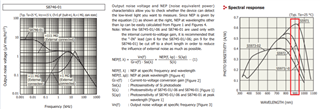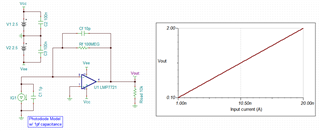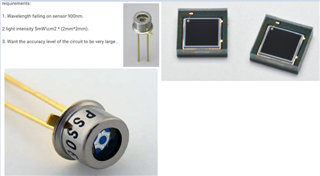Want to build an electrical circuit, a sensor (INFRED) connected to an amplifier that ,
requirements:
1. Wavelength falling on sensor 900nm.
2.light intensity 5mW\cm2 * (2mm*2mm).
3. Want the accuracy level of the circuit to be very large .
What components must I use to get good results?







